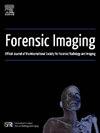Development of automatic 3D model comparison (ModelMatch3D) for forensic identification and testing using odontology data
IF 1
Q4 RADIOLOGY, NUCLEAR MEDICINE & MEDICAL IMAGING
引用次数: 0
Abstract
Three-dimensional (3D) imaging techniques including radiographic and optical surface scans are used in many medical fields including dentistry. Comparison of the resulting antemortem (AM) and postmortem (PM) data has been limited, partly due to the absence of specialised, affordable software. To address this gap, we introduce ModelMatch3D, an open-source software built upon the established 3D Slicer platform, designed to automate general 3D comparison tasks and enable rapid comparison of 3D surface data. It requires minimal preparation of datasets prior to use.
ModelMatch3D was evaluated using de-identified 3D dental scans sourced from a collection at the University of Adelaide. Dental data was selected due to its recognised importance as one of the three major identifiers by INTERPOL. Although we tested it with dental data, it can be applied to any 3D surface datasets of distinctive shape, extending its utility beyond forensic science.
ModelMatch3D runs on all major operating systems ensuring wide accessibility. It runs well on lower-end systems without discrete graphics capability. Its broad compatibility and minimal computing requirements enable its deployment in diverse forensic environments, providing an easy-to-use, automated method for rapid comparison and where multiple victims are involved, ranking of matches for subsequent expert inspection.
Technically, ModelMatch3D employs advanced algorithms for point cloud processing and feature extraction which enable rapid handling of substantial databases with no need for preprocessing.
We believe that ModelMatch3D fills a gap in forensic identification and opens avenues for comparison of other hard tissues and structures, providing a robust platform for enhancing computational forensics.

开发自动3D模型比较(ModelMatch3D),用于使用牙科学数据进行法医鉴定和测试
三维(3D)成像技术,包括放射成像和光学表面扫描,在许多医学领域,包括牙科使用。所得到的死前(AM)和死后(PM)数据的比较是有限的,部分原因是缺乏专门的、负担得起的软件。为了解决这一差距,我们引入了ModelMatch3D,这是一款基于已建立的3D切片器平台的开源软件,旨在自动完成一般3D比较任务,并实现3D表面数据的快速比较。它在使用前需要最少的数据集准备。ModelMatch3D是使用来自阿德莱德大学收集的去识别3D牙科扫描进行评估的。选择牙科数据是因为国际刑警组织承认其作为三大标识符之一的重要性。虽然我们用牙齿数据进行了测试,但它可以应用于任何独特形状的3D表面数据集,将其用途扩展到法医科学之外。ModelMatch3D运行在所有主要的操作系统上,确保广泛的可访问性。它在没有独立图形功能的低端系统上运行良好。其广泛的兼容性和最低的计算要求使其能够部署在不同的法医环境中,提供一种易于使用的自动化方法,用于快速比较,并在涉及多名受害者的情况下,对匹配进行排序,以便随后的专家检查。在技术上,ModelMatch3D采用先进的算法进行点云处理和特征提取,无需预处理即可快速处理大量数据库。我们相信,ModelMatch3D填补了法医鉴定的空白,并为其他硬组织和结构的比较开辟了途径,为增强计算取证提供了一个强大的平台。
本文章由计算机程序翻译,如有差异,请以英文原文为准。
求助全文
约1分钟内获得全文
求助全文
来源期刊

Forensic Imaging
RADIOLOGY, NUCLEAR MEDICINE & MEDICAL IMAGING-
CiteScore
2.20
自引率
27.30%
发文量
39
 求助内容:
求助内容: 应助结果提醒方式:
应助结果提醒方式:


